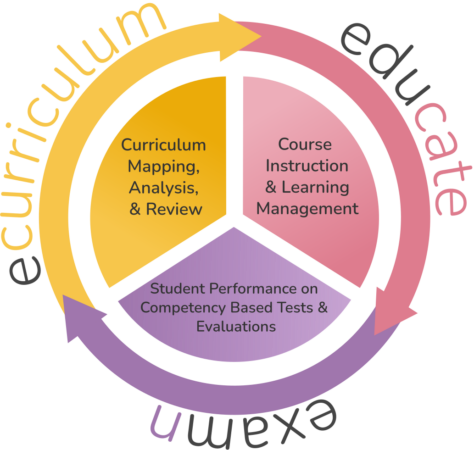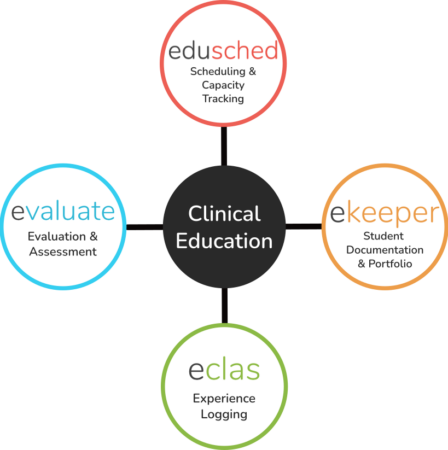Process
Pre-Clinical
Clinical


Map Curriculum: Map where, when and how students are learning Course Objectives, Session Objectives, and Competencies.
Set Schedule Parameters: Define clinical schedule format, rules, and requirements by student cohort or academic year.
Schedule Course Events: Schedule academic sessions in the course calendar to track hours allocated to specific topics and types of instruction.
Run Automated Scheduler: Schedule students into clinical rotations based on rules and requirements using an optimized automated scheduler.
Manage Course Instruction: Manage classroom instruction by posting announcements, assignments, tests, and grades for students to see in eduCATE.
Track Regulatory Requirements: Ensure that students, sites, and preceptors have all required affiliation agreements, certifications, and other documentation in place.
Assess and Evaluate Progress: Students complete tests, performance based assessments, and evaluations.
Track Student Experience: Track the amount and quality of student experience through case logging, skill tracking, and time logging.
Analyze Performance Data: Review results from assessments and evaluations to find learning gaps and enhance curricula and instruction.
Assess and Evaluate: Administer schedule and competency based clinical evaluations for students, preceptors, and sites.